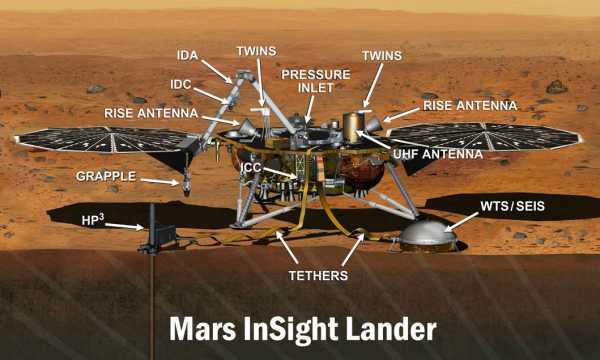The NASA InSight mission to Mars

The InSight (Interior Exploration using Seismic Investigations, Geodesy and Heat Transport) mission to Mars is a NASA Discovery Program mission planned to place a single geophysical station on Mars. The Mission’s aim is to study the deep interior of Mars and to address the most fundamental questions of planetary and solar system science: understanding the processes that shaped the rocky planets of the inner solar system (including Earth) more than four billion years ago.
InSight will deploy a seismometer (SEIS) as well as a heat flow probe (HP3) on Mars, and conduct high-precision measurements of the rotation and orientation of planet. InSight is the first planetary mission dedicated to acquiring geophysical data from surface-installed instruments and to explore the internal structure and dynamics of a planet other than the Earth.
Following the successful Apollo lunar landings and acquisition of seismic data on Moon, InSight will be the first extra-terrestrial seismology mission to study the interior of a planet in more than 35 years and will, on a par with the Apollo lunar landings, enable pioneering seismic studies of Mars.
The InSight launched on 5 May 2018 and the landing date is set to 26 November 2018.
EEG involvement in InSight – Geophysical characterisation of the shallow Martian crust
The EEG group will focus on the geophysical characterisation of the shallow Martian crust. The main focus of the EEG activities is to exploit the seismological data acquired while lowering the HP3 “mole” to image the shallow crust around the landing site. The HP3 mole will hammer itself into the loose cover of Mars down to a few meters depth. The seismic signals generated during the hammering of the HP3 experiment in combination with the SEIS instruments at the surface closely resemble a reverse vertical seismic profiling experiment (rVSP), with the active seismic source being downhole. Hence, the combined HP3-SEIS component of InSight will be the first-ever active seismic experiment on Mars.
Further information
Related images
Related publications
Sollberger,D., C.Schmelzbach, J.O.A.Robertsson, S.A.Greenhalgh, Y.Nakamura, and A.Khan(2016), The shallow elastic structure of the lunar crust: new insights from seismic wavefield gradient analysis, Geophysical Research Letters, 43, doi:10.1002/2016GL070883.
